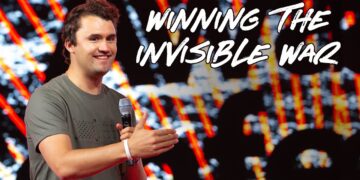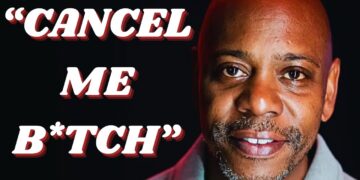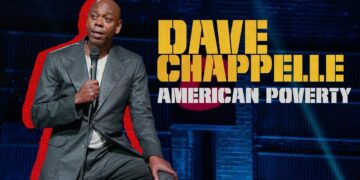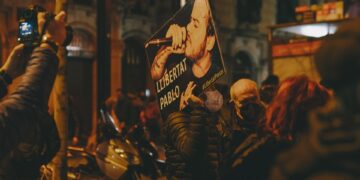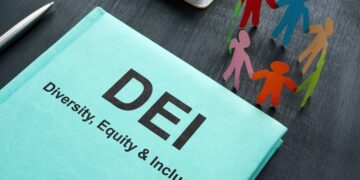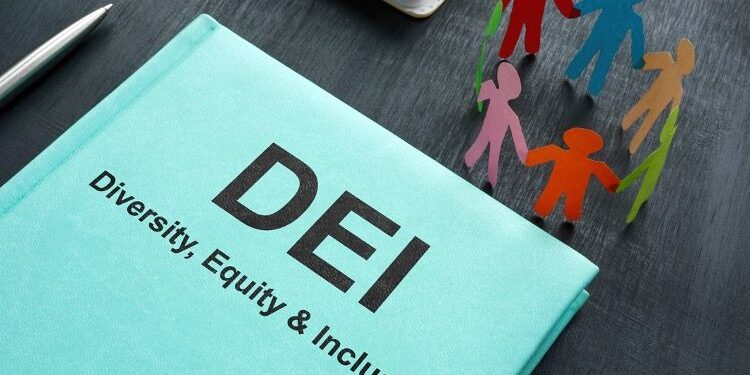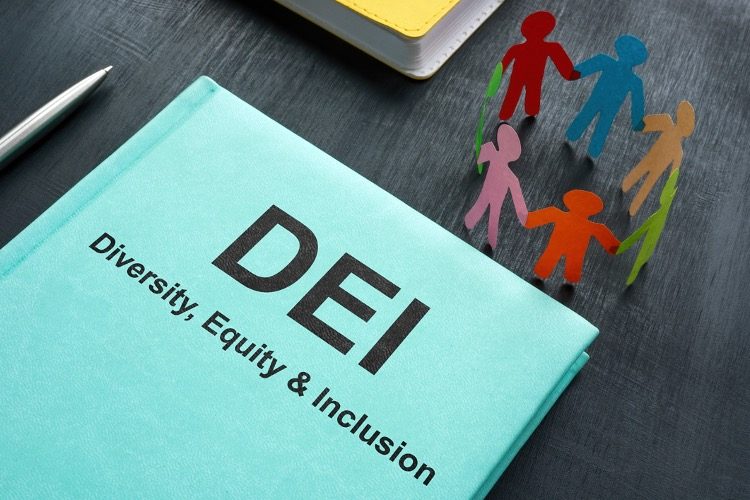
When even The New York Times complains about your leftism, you know that you not only jumped the shark with wokism, but that the shark you jumped is a megalodon. This is the case, too, with a new report on how the University of Michigan squandered megabucks on DEI indoctrination. The result of these programs?
A decade and a quarter “billion dollars later,” the Times writes, “students and faculty are more frustrated than ever.”
Note that much of this is tax money, too. In fact, the University of Michigan (UoM) campus in question, Ann Arbor, received $357 million in state funds last year. (That’s a 5.1-percent increase over 2022.) Given this, is it possible the UoM has too much money on its hands? Should it be defunded?
A Sign of the Times — From the Times!
Far from a small effort, the Times’ exposé is a 9,000-word project. To create it, investigative reporter Nicholas Confessore “spoke to more than 60 students, faculty, alumni and administrators,” he informs. Remember, too, that most all of these people — especially the staff — would be liberal Democrats.
Moreover, it must have been the professors who “egged” Confessore into writing his “engaging anatomy-of-a-failure piece,” reasons commentator Monica Showalter. “I’ve heard this kind of talk myself from Columbia University’s professors and staff,” she adds, “so it must be common.”
Showalter then offers an introduction, writing that Confessore
opens with how the University of Michigan, one of whose denizens first coined the term “affirmative action” in the 1960s or 1970s, went all in on DEI as of 2016, spending money like there was no tomorrow on putting DEI into every aspect of the U-M education — from the changing [of] botanical names of plants in the gardens, to reminding viewers in art galleries of racism even if the paintings had nothing to do with it[,] to making engineering students pass tests on systemic racism.
Doubling Down on Destructiveness
In other words, UoM was already Wokester Central. But that still wasn’t enough, as Confessore writes (the following Times excerpts are as Showalter presents them):
A decade ago, Michigan’s leaders set in motion an ambitious new D.E.I. plan, aiming “to enact far-reaching foundational change at every level, in every unit.” Striving to touch “every individual on campus,” as the school puts it, Michigan has poured roughly a quarter of a billion dollars into D.E.I. since 2016, according to an internal presentation I obtained. A 2021 report from the conservative Heritage Foundation examining the growth of D.E.I. programs across higher education — the only such study that currently exists — found Michigan to have by far the largest D.E.I. bureaucracy of any large public university. Tens of thousands of undergraduates have completed bias training. Thousands of instructors have been trained in inclusive teaching.
When Michigan inaugurated what it now calls D.E.I. 1.0, it intentionally placed itself in the vanguard of a revolution then reshaping American higher education. Around the country, college administrators were rapidly expanding D.E.I., convinced that such programs would help attract and retain a more diverse array of students and faculty.
Today that revolution is under withering attack.
Doubling Down on the Double-down
Despite this, the UoM apparently wants to die with its pink jackboots on. As Confessore also tells us, even
some of Michigan’s peer institutions have soured on aspects of D.E.I. Last spring, both the Massachusetts Institute of Technology and Harvard’s Faculty of Arts and Sciences said they would no longer require job candidates to submit diversity statements; such “compelled statements,” M.I.T.’s president said, “impinge on freedom of expression.”
Michigan hasn’t joined the retreat. Instead, it has redoubled its efforts, testing the future of an embattled ideal. A year ago, the university inaugurated what it calls D.E.I. 2.0. At Michigan’s flagship Ann Arbor campus, the number of employees who work in D.E.I.-related offices or have “diversity,” “equity” or “inclusion” in their job titles increased by 70 percent, reaching 241, according to figures compiled by Mark J. Perry, an emeritus professor of finance at the university’s Flint campus and a D.E.I. critic.
As for the result, Showalter informs that
complaints about racism, egged on by this army of administrators, exploded. Professors were singled out and harassed for reading passages from Faulkner that contained characters making racial slurs. A student expressed her outrage at hearing a white person read the literary passage and walked out of class. A white male professor abased himself before class with pre-apologies for whatever racism he might unwittingly commit — triggering a round of racism complaints for the preemptive apology itself. Nobody teaches Huck Finn anymore, an English professor noted.
(By the way, remember the above when hearing leftists complain about conservatives “banning books.” As I pointed out just Wednesday, citing Huckleberry Finn as an example, liberals deep-six books all the time. Only, no one calls attention to it.)
Universally Despised
Strikingly, too, even in woke academia, Confessore couldn’t find anyone who liked UoM’s DEI. As he related:
But over months of reporting this year, I found a different kind of backlash building, one that emanated not from Washington or right-wing think tanks but from inside the university’s own dorms and faculty lounges. On Michigan’s largely left-leaning campus, few of the people I met questioned the broad ideals of diversity or social justice. Yet the most common attitude I encountered about D.E.I. during my visits to Ann Arbor was a kind of wary disdain.
D.E.I. at Michigan is rooted in a struggle for racial integration that began more than a half-century ago, but many Black students today regard the school’s expansive program as a well-meaning failure.
(In reality, it’s a myth that any of this is characteristically “well-meaning.” Some naïve proponents may have good intentions, but most of the impetus lies with dark passions.)
Diversity Divides
Showalter then relates that the DEI had a “corrosive” effect on UoM campus life. Bureaucrats even went so far as to circumvent anti-affirmative-action court rulings by finding ways to hire DEI wokester fellows. Confessore did expose, too, how this crushed intellectual inquiry and integrity, stating:
On campus, I met students with a wide range of backgrounds and perspectives. Not one expressed any particular enthusiasm for Michigan’s D.E.I. initiative. Where some found it shallow, others found it stifling. They rolled their eyes at the profusion of course offerings that revolve around identity and oppression, the D.E.I.-themed emails they frequently received but rarely read.
Michigan’s own data suggests that in striving to become more diverse and equitable, the school has also become less inclusive: In a survey released in late 2022, students and faculty members reported a less positive campus climate than at the program’s start and less of a sense of belonging. Students were less likely to interact with people of a different race or religion or with different politics — the exact kind of engagement D.E.I. programs, in theory, are meant to foster.
Instead, Michigan’s D.E.I. efforts have created a powerful conceptual framework for student and faculty grievances — and formidable bureaucratic mechanisms to pursue them.
That DEI divides people is, of course, just common sense. Just consider the government report finding that diversity programs are a “counterproductive” waste of money.
Breeding a Monster
How counterproductive? Confessore writes of what Americans’ tax money was funding:
These growing bureaucracies represented a major — and profoundly left-leaning — reshuffling of campus power. Administrators were even more politically liberal than faculty members [a neat trick], according to one survey, and far more likely to favor racial preferences in admissions and hiring. They promulgated what Lyell Asher, a professor of English at Lewis & Clark College in Oregon, has called “an alternate curriculum,” taught not in classrooms but in dorms, disciplinary hearings and orientation programs.
Not surprisingly, either, this effort further stifled dissent. Per Confessore again:
Officially, Michigan’s D.E.I. plan includes a pledge to increase political diversity on campus. When I asked [diversity program research psychologist Tabbye] Chavous if there were any programs aimed at achieving that goal, she described an effort by the new dean of the Ford School for public policy to ensure that its curriculum exposed students to a range of political perspectives. By most accounts, conservatives remain a small minority at Michigan, perhaps 10 or 15 percent of all students. There had always been social pressure to conform to the prevailing liberalism there, faculty members and students told me. But it seemed to intensify as D.E.I. expanded, as if the peer pressure had a kind of institutional sanction.
Inmates Running the Asylum
Showalter then sums up the remainder of Confessore’s exposé, writing that he then
went into a Star Wars bar scene of all the various wokesters, each more bizarre than the last, had used DEI to advance their aims, getting on the record interviews and taking these crazy-weird photos of them in soft-focus Vogue-like glamour shots, as they spewed irrationality and nuttery in a slew of different directions. Each freak who was introduced to the verbal portrait gallery was grosser and stranger than the last one. It was like something out of Tom Wolfe, satire, but not satire, just leftists being leftists.
For sure. As with my last article, featuring a purple-haired, tattooed DEI trainer, I’ll emphasize that these people are not normal. (And even “normal” ain’t what it used to be.) As a commenter under that story quipped, “60+ years ago, we’d pay a quarter to walk thru the sideshow at a circus to see something that strange!”
Uncharitable? Well, remember that these aren’t hapless individuals born with an abnormality; they choose their bizarre status. Of course, they certainly were shaped by their upbringings and the popular culture. But the point is that they’re in disordered thinking’s grip — and they shouldn’t be running anything. Nonetheless, these damaged people, who once occupied society’s fringes, are now at the helm.
The Deeper Issue
DEI’s destructiveness is, of course, obvious. But what’s also striking about these efforts is something that should truly matter to academics, who fancy themselves intellectuals.
Diversity schemes are profoundly unintellectual.
To introduce why, consider what philosopher G.K. Chesterton wrote about education in 1910 (and ask yourself if it seems dated):
The trouble in too many of our modern schools is that the State, being controlled so specially by the few, allows cranks and experiments to go straight to the schoolroom when they have never passed through the Parliament, the public house, the private house, the church, or the marketplace. Obviously, it ought to be the oldest things that are taught to the youngest people; the assured and experienced truths that are put first to the baby. But in a school to-day the baby has to submit to a system that is younger than himself. The flopping infant of four actually has more experience, and has weathered the world longer, than the dogma to which he is made to submit. Many a school boasts of having the last ideas in education, when it has not even the first idea.
DEI, and all our modern pedagogies, in fact, are in the nature of fads — often dark fads. It is children, however, and other immature people who glom onto fads. True intellectuals — assuming “intellectual” can as a noun have a positive connotation — don’t puerilely embrace the latest shiny thing. They don’t conform to the age, but seek to conform it to the ageless.
The Way of the Wise
That is, authentic intellectuals have for judging all “new” things a certain eternal, unchanging yardstick: the virtues. These, it could be said, are morality’s components; if morality came in a jar, they’d be on the ingredients label. Examples are Charity, Courage, Diligence, Love, Hope, Faith, Chastity, Kindness, Honesty, Temperance, Prudence, and Humility. Believing in Truth and understanding that the virtues reflect it, true intellectuals will judge any “new” idea under their light. Then they’ll realize, too, that something else Chesterton said is also correct. To wit:
“Nine out of 10 of what we call new ideas are simply old mistakes.”
Of course, though, if they did this, they wouldn’t just be intellectual. They’d be wise.



